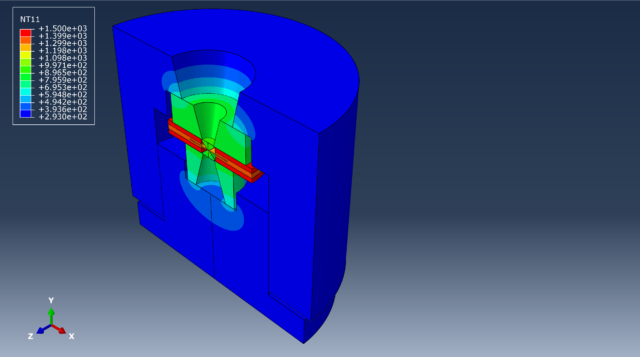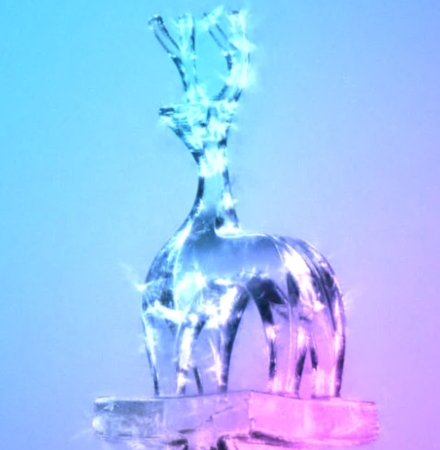Creating High Pressures is No Mean Feat
Meet Toby Bunn, a mechanical engineering postgraduate student at University College London (UCL), who is working alongside AWE scientists Mark Storr and Simon MacLeod to understand thermal transfer through Diamond Anvil Cells, and how it supports AWE’s research in materials science – as part of our mission in nuclear deterrence and national security.
The Diamond Anvil Cell is a device used to create extremely high pressures and is popular for its versatility – making it possible to reproduce the pressures deep within the Earth, not seen under normal conditions.
Sponsored through the highly acclaimed Chief Scientist Short Project Scheme, which was designed to promote collaboration between AWE and UCL, Toby describes how the modelling of thermal transfer is done using the industry standard software Abaqus. Toby’s project is titled ‘Modelling Thermal Transfer in a Diamond Anvil Cell.’ Not only is the Diamond Anvil Cell a device for compressing materials to extremely high pressures, but it can in fact be adapted to incorporate various methods of adding heat to a compressed material. To that end, AWE are currently developing a new resistive-heating method that should extend the generation of experimental data to higher pressures and temperatures than was previously possible. However, a critical factor in the design is understanding how the temperature will be distributed throughout the Diamond Anvil Cell – and this is where modelling plays a crucial role.
Why did you choose your project?
It was an excellent opportunity to gain experience working on a research project that will contribute to real developments at AWE. It also aligned well with the skills I have gained throughout my course and gave me an opportunity to expand my knowledge on the software used. I had previous experience in structural analysis so modelling heat transfer was an area I was eager to learn.
Do you feel like you achieved what you set out to do?
I achieved my personal goals from the project of gaining the relevant experience, and I also feel I achieved the aim of aiding technological advancements at AWE. I managed to complete all objectives and stretch objectives discussed, focussing on improving accuracy of the model and redesigning the system, so I view the project overall as a success, and a piece of work of which I am proud.
Do you feel like you’ve made an impact on the scientific community with your findings?
I feel the findings from the research have delivered improvements of the model. As a result, it could lead to further and interesting research at AWE using the Diamond Anvil Cell. I hope therefore the work I have done allows use of the Diamond Anvil Cell at the desired temperatures.
Would you be interested in pursuing a career at AWE after your degree?
I will be applying to AWE for a place following the conclusion of my degree. My project has definitely given me a positive view of the company and the great and exciting work that is done there, so working at AWE is an option that I intend on exploring further.
Opportunities like these are only made possible through the mutually beneficial partnerships and collaborations between AWE and academia. Not only do students get to work on fascinating projects and see how the theory applies to industry, but AWE also gets fresh insight into how other individuals approach research questions.
If you would like to find out about exciting career opportunities at AWE, please visit awe.co.uk/careers or X (Twitter) @AWE_plc.
 |
 |
Figures 1 and 2 of the Diamond Anvil Cell with legends showing temperature distribution throughout the cell



